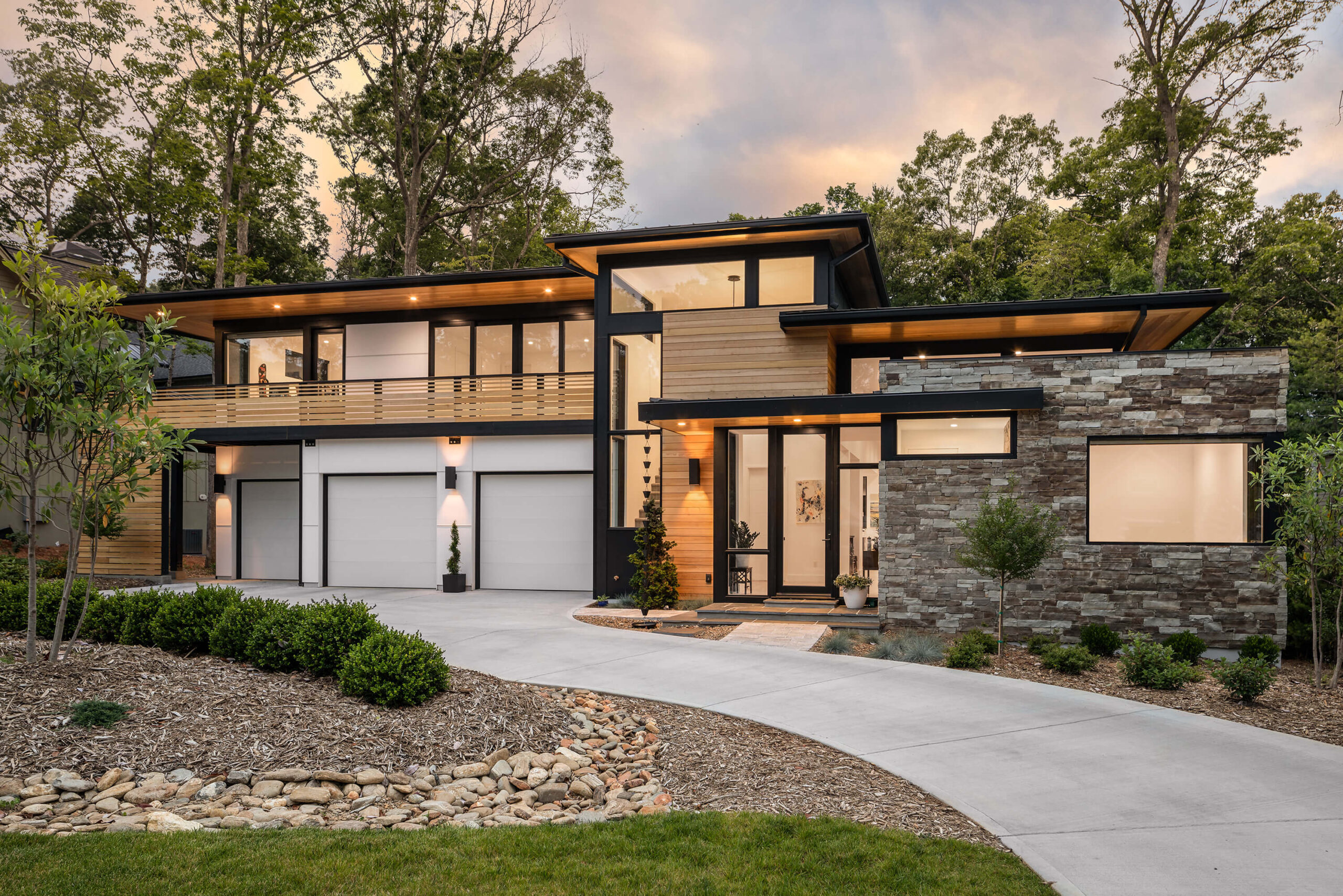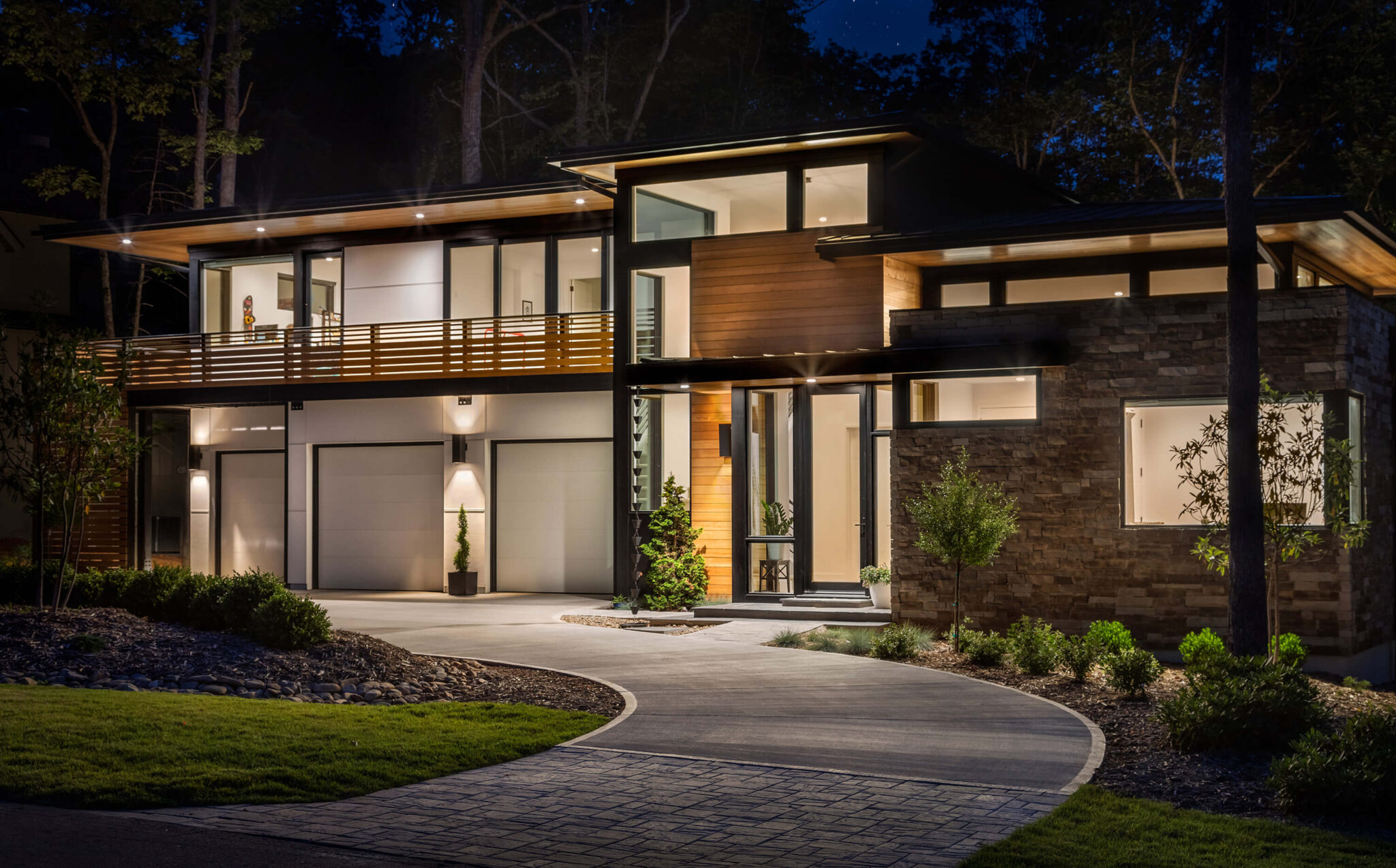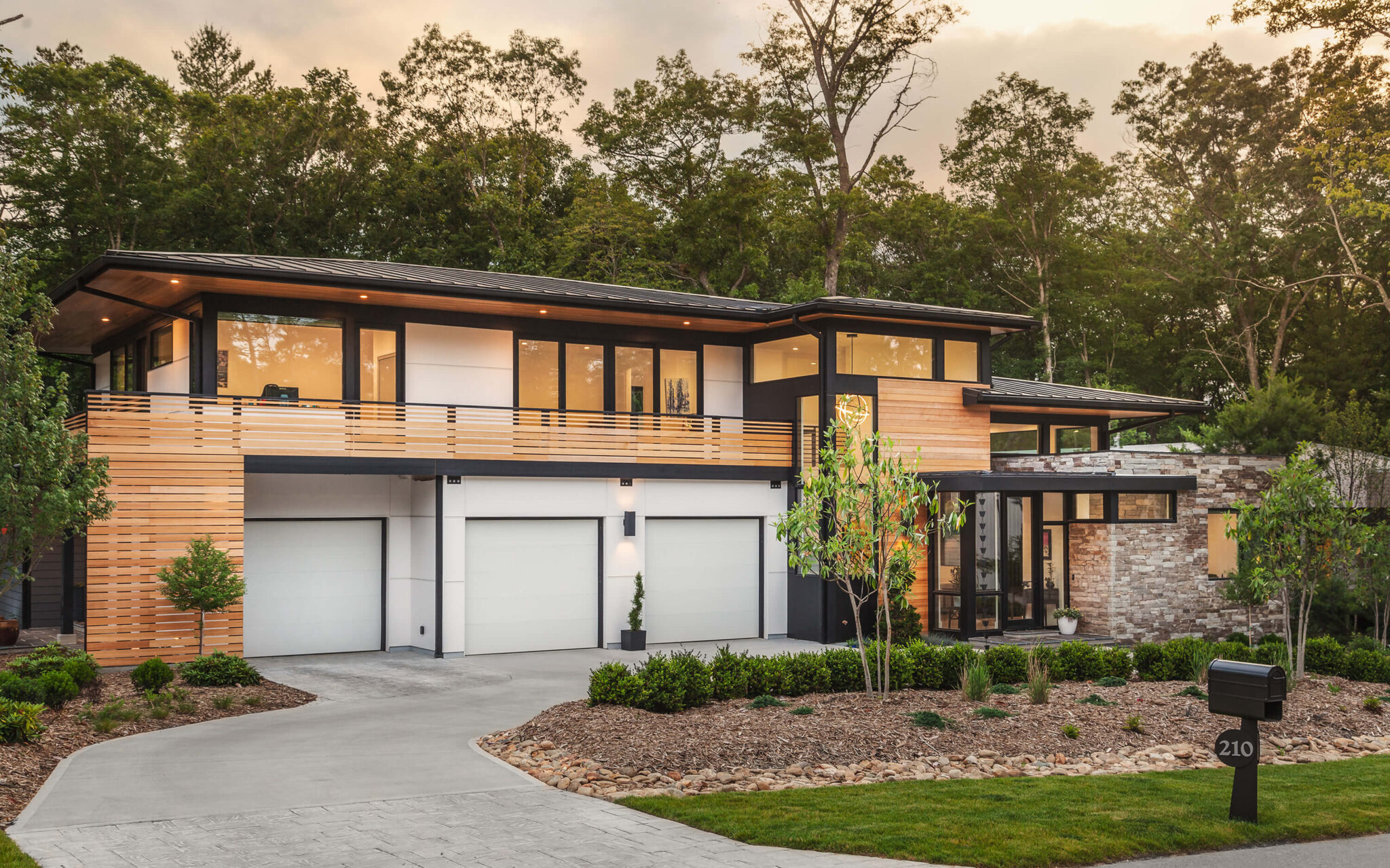Two Creeks (Viksnins)
Nestled within The Ramble, an exclusive residential enclave bordering the Blue Ridge Parkway in Asheville, North Carolina.
Size
-
Location
Snowmass Village, Colorado
Project Team
Vellum Architecture
Design Team
Amarx Construction
Completed
2017
Category
Residential

Project Brief
This multi-generational home responds to both its distinctive natural setting and the evolving needs of an extended family.
The design brief called for a residence that could accommodate two households under one roof—providing both connection and autonomy—while fostering a strong relationship to the surrounding landscape. The resulting architectural solution is a carefully composed assembly of two independent living volumes, unified by a shared vestibule that acts as both physical and symbolic nexus. This spatial strategy achieves a balance between privacy and togetherness, supporting the family’s desire for flexibility, independence, and a sense of communal belonging.
Project Brief
On one side of the home resides the primary family dwelling, accommodating the clients and their two young sons.
Opposite, a fully independent Mother-In-Law apartment provides a private, self-sufficient living arrangement for the matriarch of the family. This auxiliary dwelling includes its own kitchen, living spaces, and a dedicated art studio. The suite benefits from a private entrance discreetly positioned on the side elevation of the home, offering direct access to the backyard and an uninterrupted view of the wooded landscape beyond.
Project Brief
A key challenge in the design was ensuring both residences maintained a sense of independence while facilitating an intuitive and convenient connection.
The central vestibule serves as the architectural hinge between these two realms, enabling flexible interactions while preserving the desired levels of privacy. Additionally, the garage was carefully integrated to provide equal and efficient access to both households without compromising the overall spatial hierarchy.
Project Brief
The clients expressed a strong affinity for Prairie Style architecture, particularly the works of Frank Lloyd Wright.
In response, the design synthesizes key tenets of the Prairie ethos—horizontal emphasis, deep overhangs, and an intimate relationship to the landscape—while introducing contemporary elements to meet the family’s modern lifestyle. The architectural composition is anchored by a two-story stair hall and entry volume, which acts as a luminous vertical counterpoint to the home’s broad horizontal lines. Extensive clerestory glazing introduces generous daylight into the interior, mitigating the mass of the roof and reinforcing the horizontal datum that defines the home’s silhouette.
Material selections reinforce the dialogue between traditional and contemporary influences. A palette of light wood siding, natural stone, and smooth stucco reflects both the regional vernacular and the Prairie tradition’s emphasis on natural materials. Expansive corner windows and extended roof overhangs enhance the home’s connection to its setting, while providing passive solar control and contributing to the clarity of the architectural language.
At the rear, the house opens toward a mature wooded grove. Here, a cascading deck system extends the living spaces outward, creating a seamless transition to the lawn below and offering a place for recreation and reflection. This outdoor extension serves the active needs of the family’s young children, providing ample space for sports and leisure activities within a carefully framed natural context.
The contemporary open living plan.
The contemporary open living plan.
Project Brief
A key challenge in the design was ensuring both residences maintained a sense of independence while facilitating an intuitive and convenient connection.
The central vestibule serves as the architectural hinge between these two realms, enabling flexible interactions while preserving the desired levels of privacy. Additionally, the garage was carefully integrated to provide equal and efficient access to both households without compromising the overall spatial hierarchy.




